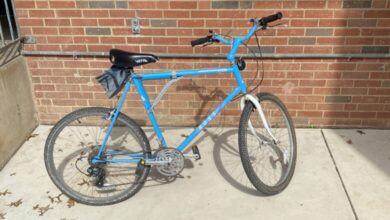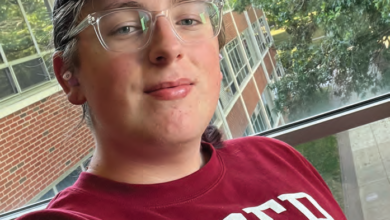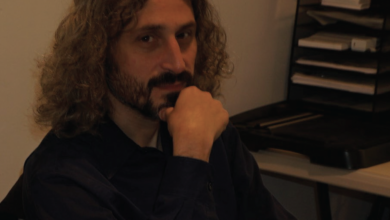Mass incarceration: modern-day slavery
By Qur’an Hansford
I was originally going to introduce this week’s editorial topic by mentioning Dylann Roof, the murderer of nine black churchgoers in South Carolina in 2015, and how he’s reportedly being “treated disproportionately harsh” inside a federal prison in Terre Haute, Indiana. In letters sent to the Associated Press in February, Roof stated that he initiated a hunger strike “to protest the treatment” he had received.
I immediately became conflicted with the juxtaposition of not feeling remorse for Roof and urging for prison reform, knowing these misconducts frequently happen within jails and prisons and to innocent inmates as well. That was going to be the premise of my prison reform argument, but I did not want Roof to be the root of that.
An article from NJ.com was published over the weekend about a man named David Yearby who died in 2014 of a cervical fracture to the spine after being taken into custody at Middlesex County jail.
The county of Middlesex will now pay his family $5 million.
To my surprise, Yearby and I were from the same city of Plainfield, New Jersey. He was also a Piscataway High School graduate, the same high school I graduated from. Until three days ago, I had never heard of Yearby or his case.
Yearby was arrested and charged with assaulting two police officers in 2014. He died two days later.
What I did know was that the United States has beat out big countries such as India, Russia and China for having the highest incarceration rate in the world.
According to CNN, nearly 2.2 million adults were held in America’s prisons and jails at the end of 2016. Meaning for every 100,000 people residing in the United States, approximately 655 of them were behind bars, according to the 2010 U.S. census.
We have seen similar stories of inmates and untimely deaths while being incarcerated.
Sandra Bland was a 28-year-old woman who was found dead, hanging in her cell, after being detained for three days for failing to signal while changing lanes. Bland’s name began to ring bells across the country sparking the conversation about corrupt cops, inefficient prison officials and the overcrowding in prisons.
“Bland’s death in a largely rural part of southeast Texas…[led] to the enactment in 2017 of the Sandra Bland Act, which requires training in de-escalation techniques for all police officers, sets up protections in custody for people with mental health and substance abuse issues, and requires that independent law enforcement agencies investigate jail deaths,” according to the New York Times.
A month before Bland’s death, a young man named Kalief Browder took his own life in the Bronx, New York. Browder is known for having been held as a minor at the age of 16 at Rikers Island without trial, for allegedly stealing a backpack, between 2010 and 2013. When his family was unable to make bail of $3,000, he was in solitary confinement for two of these years, which is safe to say is what drove him to suicide. Browder endured brutal beatings from both from other inmates and officers, starvation and months of psychological torture as a teenager.
Misconduct in the federal prison system is widespread, tolerated and routinely covered up or ignored, including among senior officials, according to a congressional report released by the New York Times.
“The lawyer for [Yearby’s] estate said the settlement is the largest one reported involving a correctional facility in New Jersey. The lawsuit filed by his mother claimed Yearby died in the early morning hours of Nov. 2 after spending nine hours in a restraining chair at the jail. He was maced, beaten and a spit hood was placed over his head while strapped to the chair, the family claimed,” according to NJ.com.
The report by the federal House Subcommittee on National Security also found that a permissive environment in the Bureau of Prisons had often made lower-ranking employees targets of abuse including sexual assault and harassment by prisoners and staff members.
Inmates can easily exploit the culture of permissiveness.
“If they know that an employee will get little support from management if harassed, that employee becomes a target,” according to the House Subcommittee on National Security.
A New York Times investigation of federal prisons last year found rampant sexual harassment, retaliation for those who spoke out and few consequences for those responsible.
“More than a dozen allegations against five federal prison wardens included assaulting an inmate, embezzlement, harassment, retaliation and creating a hostile work environment,” said the New York Times.
There seems to be an internal conflict within the prison system that turns a blind eye to the lawlessness within jails. Yearby’s case was similar in terms of the lack of knowledge to how he succumbed to his injuries.
“Investigators interviewed jail personnel, reviewed security footage and consulted with medical personnel, but still could not pinpoint when the injury, commonly known as a broken neck, occurred,” according to NJ.com
As a result, no criminal charges were sought, confirmed by Yearby’s father Terrence Rhodes.
“I don’t agree with the findings,” Rhodes said. “You’re telling me that you don’t know when my son sustained a cervical fracture, but he is still up and fighting corrections officers before they place him into the restraints? That doesn’t make any sense.”
Ava DuVernay has directed films such as “13th” and “When They See Us” that personify the effects States, focusing on the fact that the nation’s prisons are disproportionately filled with African Americans.
The Thirteenth Amendment to the United States Constitution abolished slavery and involuntary servitude, except as punishment for a crime which has led to the legalization of “modern-day slavery.” Contemporary slavery, also known as modern slavery or neo-slavery, refers to institutional slavery that continues to occur in present-day society.
The Eighth Amendment of the United States Constitution prohibits the federal government from imposing excessive bail, excessive fines or cruel and unusual punishments. But, instead we have seen prisons neglect inmates’ human rights of education, unfit living conditions and physical and mental abuse. The system of mass incarceration has multiple branches, whether it is the school-to-prison pipeline or the fact that the nation’s prisons are disproportionately filled with minorities.
The United States’ is leading the world in mass incarceration than any other nation in the world, we focus more on confinement and punishment rather than rehabilitation. United States’ prisons do not prepare inmates for a new life after their sentence, instead the prisons leave them with further issues that are not treated for when they are released. Regardless of the crime, I do believe that it is important for everyone within these prisons to benefit from prison reform rather than allowing misconduct to happen to only a few that “deserve it.”



